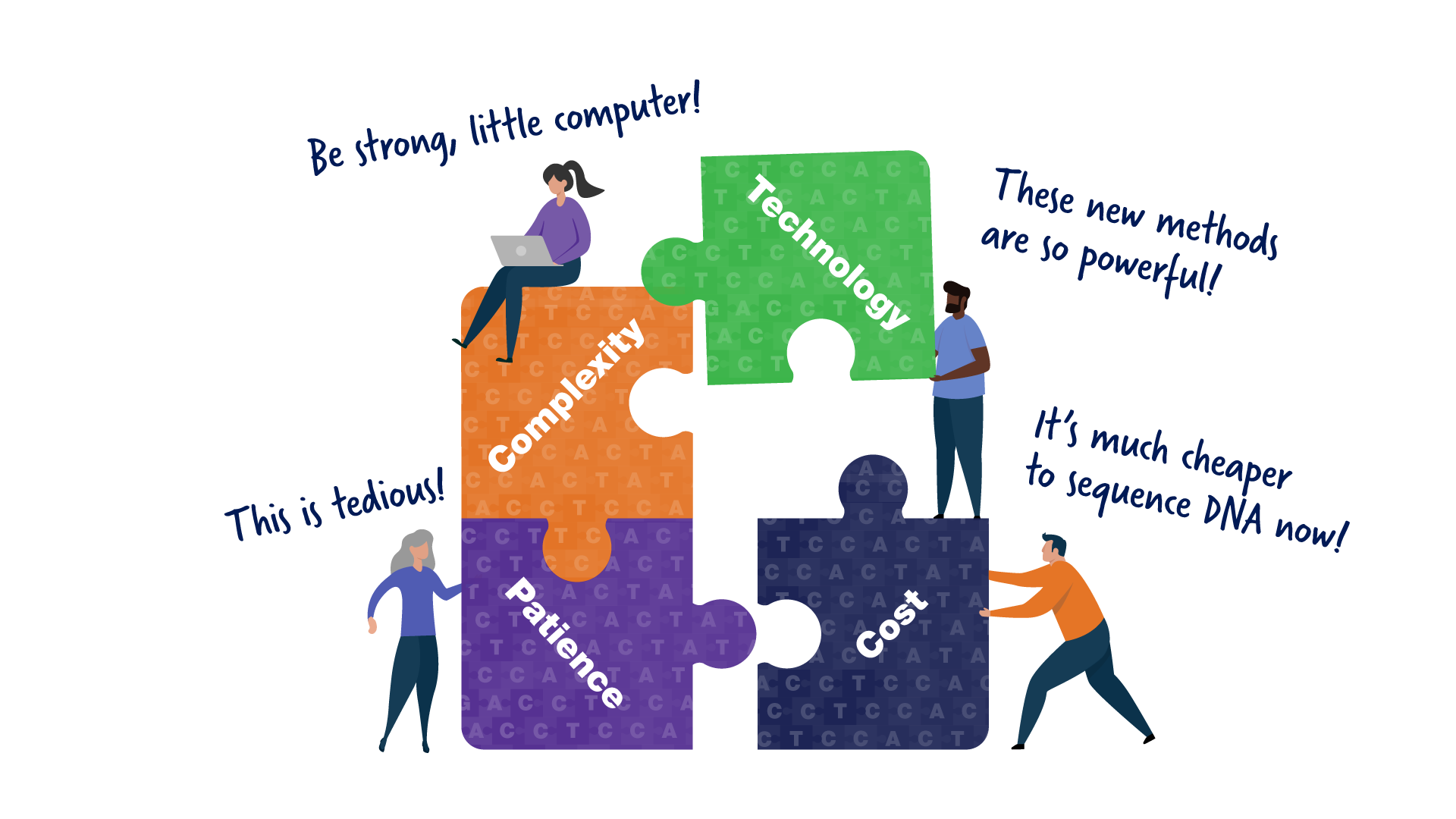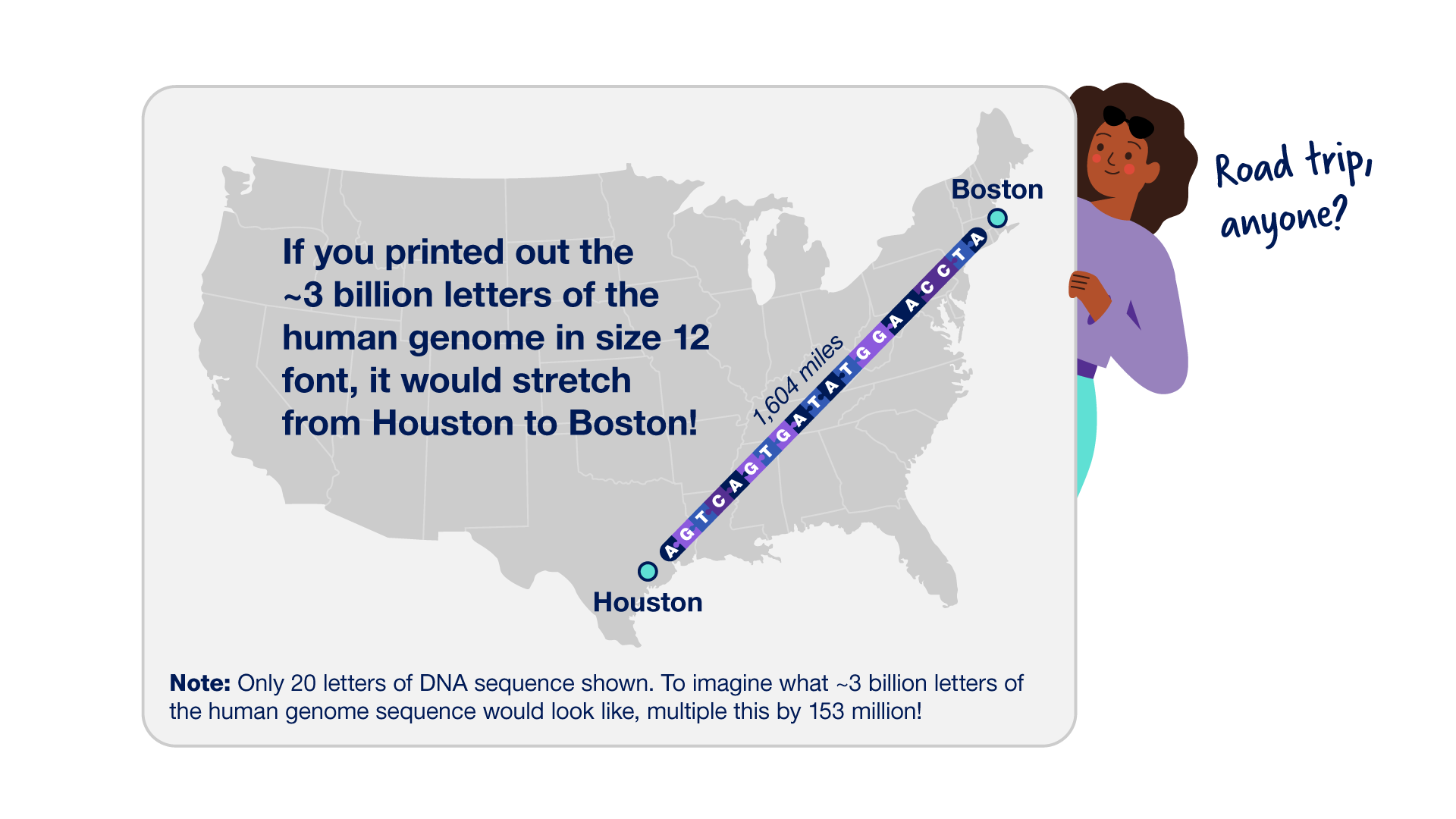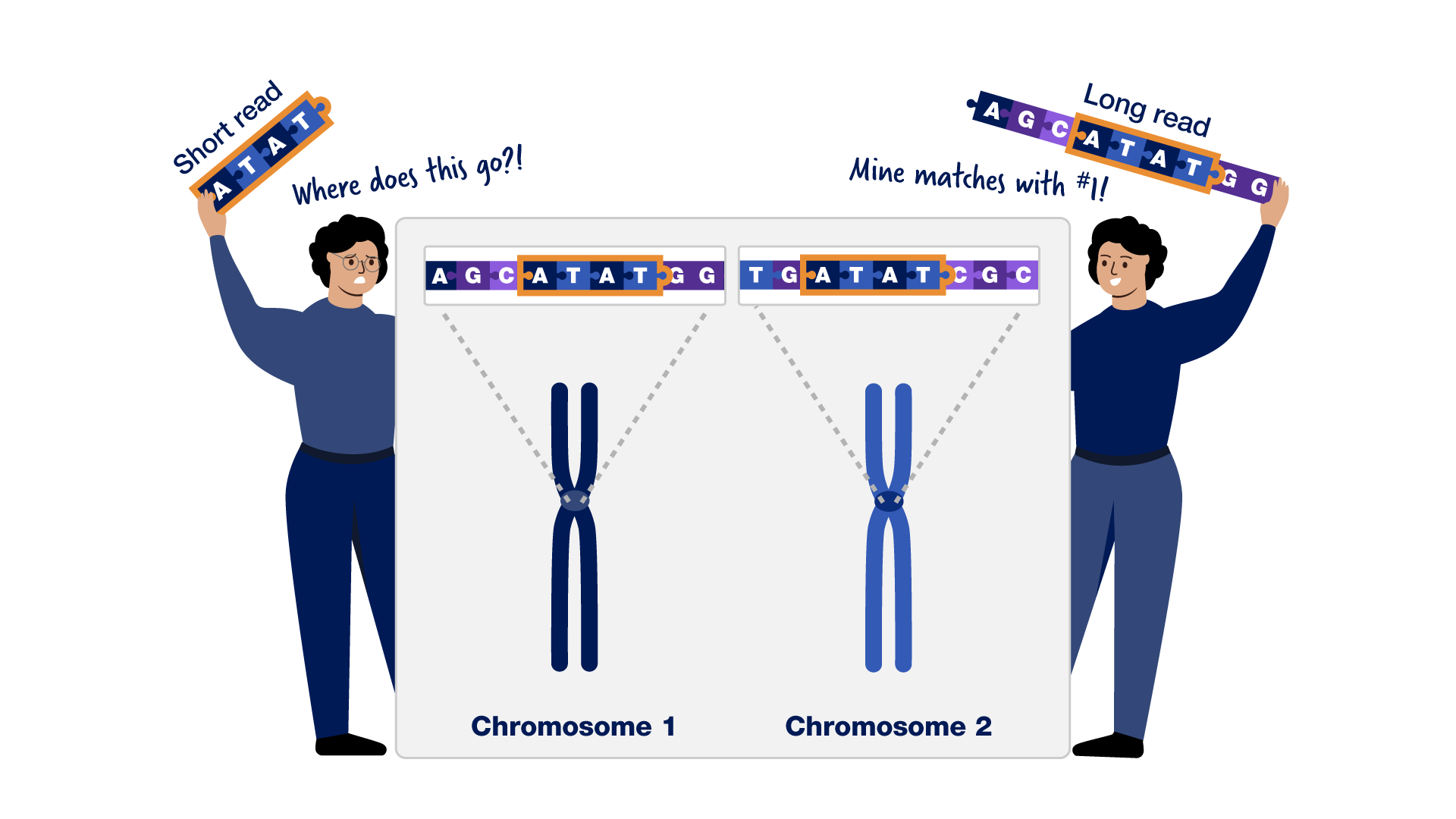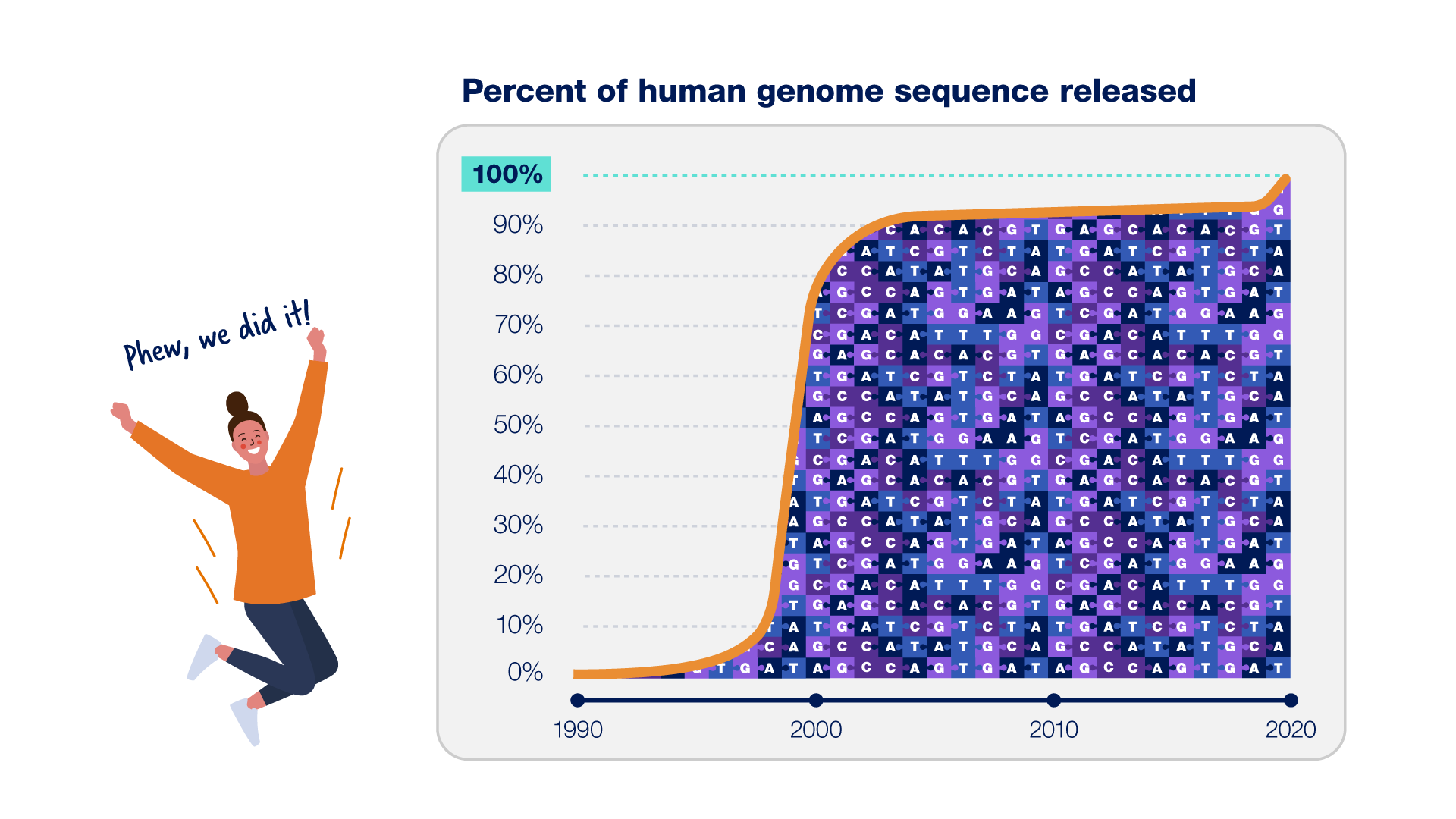The last 8% needed a generation of dedicated genomic researchers with a vision.
Even with new technologies, genome sequencing is still tough, time-consuming work that requires a lot of skill and dedication. The current generation of genomic researchers are true perfectionists and brought everything together to finally complete the human genome sequence.

A jigsaw puzzle consists of 4 pieces with the words (clockwise, from left to right): Complexity, Technology, Cost and Patience. Specific messages accompany each puzzle piece: The lady who sits on the Complexity puzzle piece is working on her laptop with the message above her saying, "Be strong, little computer!" A gentleman attempts to join Technology puzzle piece with the Complexity puzzle piece(to the left) and Cost (below), with the message behind him saying, "These new methods are so powerful!" Another gentleman below him attempts to join the Cost puzzle piece with Patience puzzle piece (to the left), with the message behind him saying, "It's much cheaper to sequence DNA now!" And finally, another lady holds the Patience puzzle piece in place, with a message above her saying, "This is tedious!"






